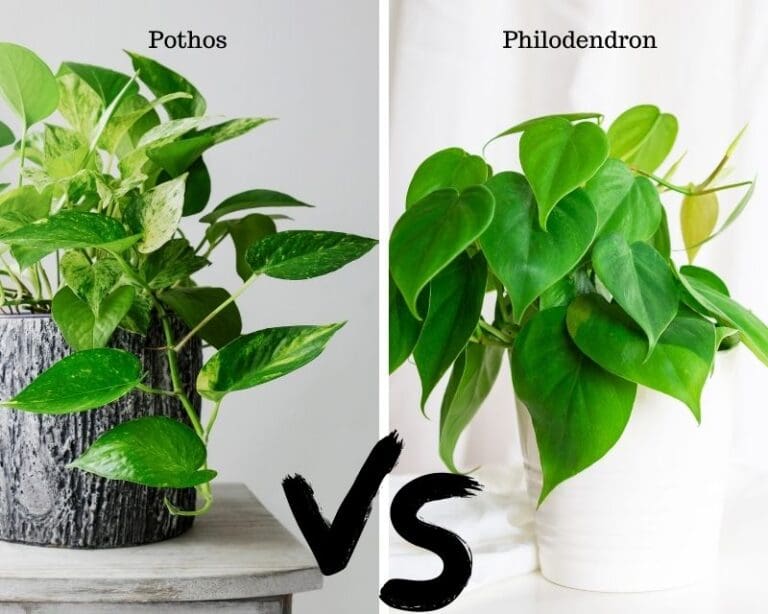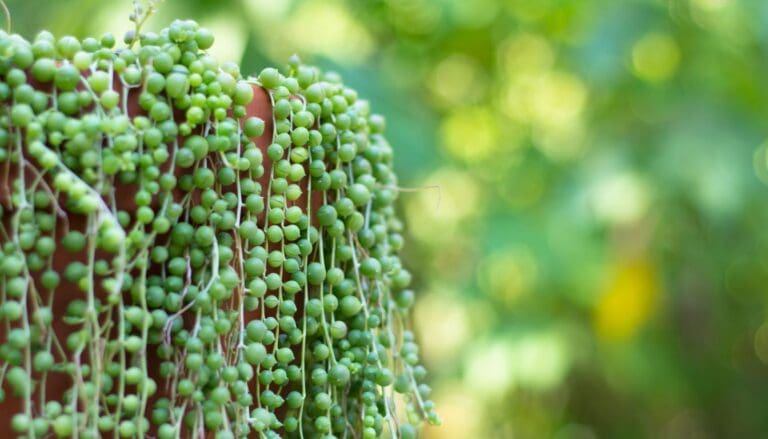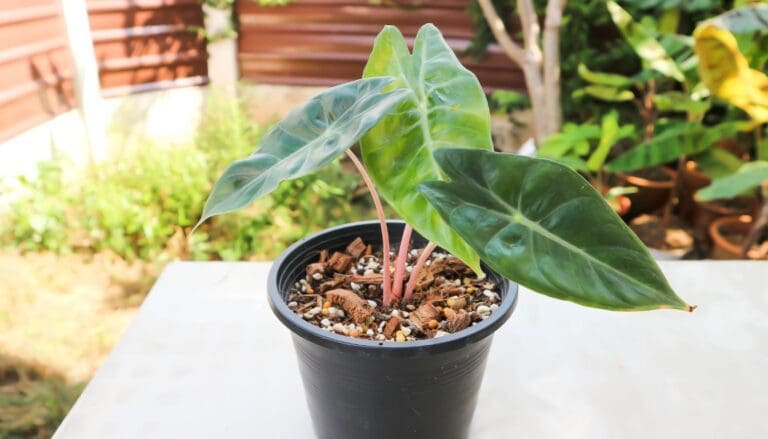Philodendron Leaves Drooping? 8 Causes & Fix
Philodendrons are loved for their unique and variegated foliage that comes in both climbing and non-climbing varieties. But when these beautiful leaves start drooping, their owners get worried about the plants. Drooping leaves occur due to unfavorable conditions and several other reasons that we will discuss in this article.
Both overwatering and under-watering can lead to droopy leaves in your philodendron. Other reasons include stress, pest infestation, inadequate lighting, and fertilization problems. Ensure you water the plant when the soil is 80% dry, but always check the top 2-3 inches of soil before watering.
If you are not watering your philodendron right, its leaves can droop due to pressure of overwatering or dehydration due to under-watering.
Over-fertilization, exposure to direct sunlight, and poorly draining soil can also lead to droopy leaves in your philodendron.
However, don’t worry if you notice droopy leaves on your philodendron, as we will cover all the causes and their solutions in this article.

Please note: Simplify Plants is reader-supported. Some links in the post are affiliate links and I get a commission from purchases made through links in the post.
Why is my philodendron droopy?
There can be different reasons behind droopy leaves in philodendrons.
- Watering issues
- Heavy soil mix
- Pest infestation
- Over-fertilization
- Low humidity
- Wrong pot size
- Low light
- Temperature fluctuation
Let’s get into the details of the problems mentioned above.
1) Watering issues
Water is one of the most crucial factors determining the plant’s health. If you ignore the water requirements of the plant, it will lead to different problems.
If you notice droopy leaves, the reason might be under-watering. If you keep neglecting the water requirements of your philodendron, it will adjust the first few times but will cause droopy leaves if you keep doing it.
Due to under-watering, the new leaves will be soft and droopy instead of firm and hard.
This indicates that your philodendron requires more water.
On the other hand, overwatering can be a reason for droopy leaves because when you give your plant too much water, the roots remain wet for a long and fail to absorb oxygen and nutrients from the soil.
All these make the plant weak, due to which the leaves lose the energy to remain firm and become droopy.
Solution: If you are not giving your philodendron enough water, you need to increase the frequency or the amount of water you give the plant.
First of all, you need to check the soil from time to time, and whenever the top 2-3 layers of the soil feel dry, you should consider watering the plant instead of neglecting it.
Water the philodendron thoroughly every time you water it so it reaches all parts of the roots and starts coming out of the drainage holes.
If you are overwatering your philodendron, you can correct it by stopping the watering till the soil gets dry.
You should never follow any watering schedule blindly and always check the soil before watering to ensure that the top layers are dry and the plant is ready for watering.
If the condition is severe and there is root rot, you need to repot the philodendron in fresh soil mix after pruning the rotten roots that have turned brown.
You can check the soil by inserting a skewer or your finger inside it or using a moisture meter.
Keep your philodendron in a bright and well-aerated spot so that the soil doesn’t remain wet for too long.
Also read: How Much Water Does A Philodendron Need? (Water Requirement+How Often)
2) Heavy soil mix

Philodendrons require well-draining soil to thrive. Philodendrons are tropical plants that need proper air circulation in the soil and roots to remain healthy.
Using a regular potting mix might be too heavy for the philodendron as it will not let the water flow out of the soil. This will keep the soil and the roots moist and soggy.
Poor drainage will cause other problems, such as root rot, yellow leaves, fungal and bacterial infections, and droopy leaves.
Therefore, you need to get soil that supports proper drainage of excess water.
Solution: You need to repot the philodendron in a well-draining soil mix that not only drains the excess water out of the system but also keeps the roots aerated.
The right soil mix will retain the required nutrients and water. You can create an ideal soil mix by adding:
- 1 part of peat-based soil mix
- 1 part of perlite
- 1 part compost
This soil will provide sufficient nutrients to the soil mix.
Also read: What Type Of Soil Does A Philodendron Need? (Best Soil Mix)
3) Pest infestation
If pests attack your philodendron, you can see signs like droopy or curled leaves. You need to get rid of the pests immediately.
Pests populate very fast and can affect your plant by sucking on the plant’s sap and absorbing all nutrients from it.
If the philodendron doesn’t get the right cultural conditions, pests will lead to many other problems, and if you don’t do anything about it, the plant can even die.
If you overwater your philodendron during this time, it can make the situation even worse.
Solution: Treating pest infestation and eliminating the pests is no rocket science.
Using an organic way of treating pests is the best way of controlling pest attacks as it is non-toxic for your plants and will not harm them in any way.
Wash the philodendron plant thoroughly under running water to get rid of pests. However, ensure the water doesn’t sit on the soil or the plant’s leaves.
Use cold water to wash the plant, as hot water can harm the plant. Washing the plant will help eliminate the honeydew secreted by the insects.
Using neem oil solution is best as it will not harm your plant and kill the pests by penetrating inside the circulatory system of the insects.
Mix 1 tbsp of neem oil with 2 cups of water and spray it all over the philodendron for 14 days to eliminate the pests.
You can also hand-pick the pests that are visible to you.
Some other ways of eliminating the pests include:
You can use chemical pesticides available in the market, but they can harm your philodendrons, so you should be careful while using them.
4) Over-fertilization
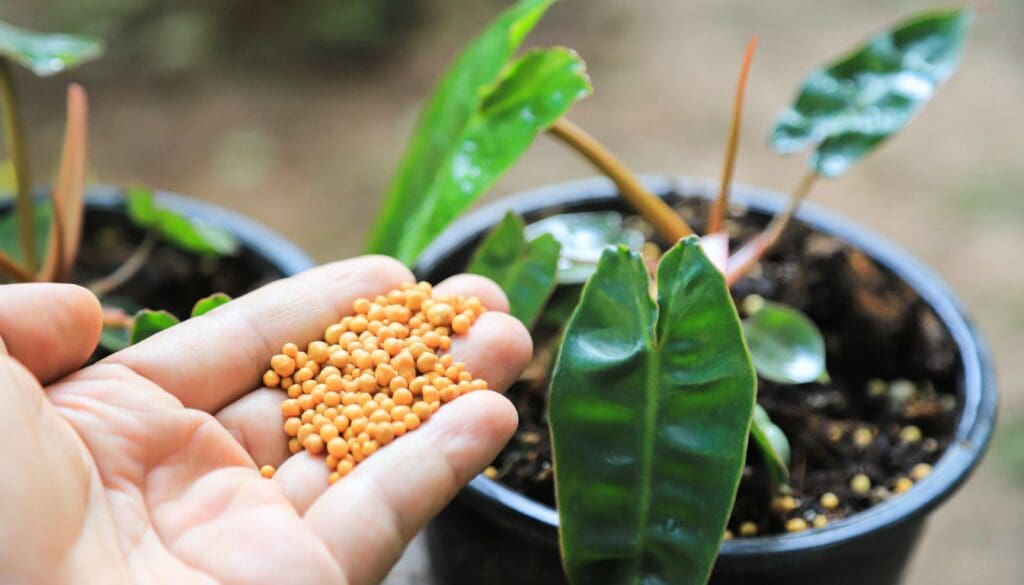
Fertilization is the key to providing nutrients and boosting the growth of the philodendrons. However, too much of it is not recommended as that will lead to over-fertilization.
Over-fertilization can lead to salt build-up in the soil that can cause root burn and leaf burn.
Over-feeding your philodendron with excess fertilizer will lead to problems like brown tips on leaves, curling of leaves, brown spots, root rot, droopy leaves, etc.
Solution: Instead of over-feeding your philodendron with excess fertilizer, you need to give the plant the correct dose if you want to keep it healthy.
The philodendrons are fast-growing plants that need to be fertilized once or twice a month during the summer and spring seasons.
You should dilute the prescribed dose and make it half-strength before giving it to your philodendron.
You should start slowing down the fertilizing during starting fall and avoid fertilizing in winter as the plant becomes dormant and doesn’t require fertilizer during this time.
Also read: What Kind Of Fertilizer For Philodendron? (Best Fertilizer+Fertilizer Ratio)
5) Low humidity
Tropical plants are used to high humidity levels, which they prefer, even as houseplants. If your philodendron doesn’t get enough humidity, its leaves will lose their shine and will start drooping.
If there is a sudden change in the humidity level, even that can harm your philodendron.
If your philodendron plant is placed near a fireplace, vent, or window that gets cold drafts, you should remove it from there and relocate it to a spot that has some humidity.
Solution: Keep a humidifier near your philodendron to maintain the proper humidity level. This is a must, especially during the colder months.
You can group your philodendron with other houseplants to increase the humidity.
Misting can also help maintain the humidity at times, but you should not do it too often.
Also read: Do Philodendrons Like To Be Misted? (+Ways To Boost Humidity)
6) Wrong pot size
The pot size might seem insignificant, but this can cause droopy leaves if the philodendron doesn’t get the proper care.
If you don’t alter your care routine based on other factors, such as the size of the pot, the plant will face issues due to it.
Solution: If you use a small pot for your philodendron, the soil will take less time to dry, so watering once a week should be ideal for the plant.
But if the size of the container is too big, it will hold more water, and the soil will take time to dry. Therefore, the plant will need less water than usual.
You should water your philodendron after making sure that the soil is dry. You should always use a pot that is one size bigger than the size of your philodendron. If you use the correct size, your plant will not have droopy leaves.
Also read: What happens if you put a plant in too big of a pot?
7) Improper lighting
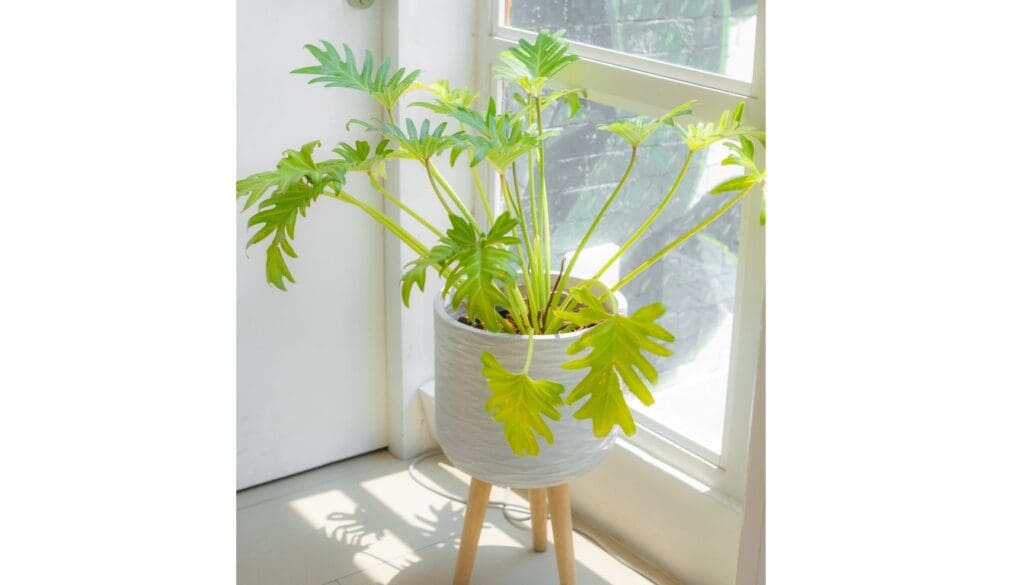
If your philodendron is exposed to direct sunlight, the leaves will scorch and droop.
In their natural habitat, philodendrons protect themselves by taking shade under bigger trees so they don’t get scorched due to direct sun. So, you should not let the philodendron remain under direct light.
Even artificial lights with high intensity can be harmful to your philodendrons. If you expose the plant to such light types, the moisture will evaporate fast from the leaves, making them dry.
Low light is also not recommended for your philodendron as the plant will not be able to photosynthesize due to insufficient light, and the leaves will lose their color and shine.
If the leaves of your philodendron start tilting in one direction, it means that the leaves are not getting enough light.
Solution: The philodendrons require medium to bright indirect light. Place your philodendron in a bright area where the plant will get enough indirect light.
If you expose the philodendron to direct sunlight for too long, it might be the reason behind droopy leaves. If you don’t have any natural light source, consider getting fluorescent light for the plant.
A window or balcony that receives indirect sunlight is ideal for your philodendron. Keep the plant some feet away from the window if it gets direct sunlight.
Also read: What Kind Of Light Does A Philodendron Need? (Light Requirements)
8) Temperature fluctuation
The philodendrons appreciate warm temperatures ranging between 70-80°F. If the temperature levels drop below 50°F, the philodendron will start having stunted growth, brown leaves, and droopy leaves.
The philodendron will droop or curl due to dry air, low light, and lack of moisture. You should protect your philodendron from low temperatures and cold weather.
Solution: If the temperature levels drop below 50°F, you should protect the philodendron by keeping it in a controlled environment where it gets enough heat and humidity.
You can place your philodendron near a furnace or stove to increase the temperature level around it. However, you should place it a few feet away so that the leaves don’t get burnt due to the heat.
Keeping your philodendron in a warm climate and providing sufficient water to it will make it flourish.
Tips to keep your philodendron healthy

Philodendrons are excellent houseplants for both beginner and experienced houseplant lovers. If you want to see your plant healthy, you must take care of its roots.
Never get a pot that is too big or too small for the plant, as it can lead to either overwatering or restricting the roots.
Choose materials like terracotta, ceramic, or wooden pots, as these will retain some moisture and allow good airflow between the roots.
If you want to provide moisture to all parts of the roots, you can try bottom watering.
Keep your philodendron in an area with sufficient indirect light but not direct sun exposure. Rotate the plant periodically to prevent legginess.
Try to maintain high temperature and humidity levels.
Fertilize during the growing season and stop fertilizing in winter. You can mist the philodendron to keep the leaves clean, which will help in better photosynthesis.
Prune your philodendron from time to make sure that the plant doesn’t overgrow and remains in shape.
Final words
A little care will be enough for your philodendron; however, you should never overdo anything, as that will only cause problems for the plant.
All you need is to provide proper cultural conditions, which will be sufficient to keep your philodendron healthy.
Ref: Wikipedia.
Recommended Garden Supplies
| Product Image | Our Recommended Gardening Supplies | Check Offers! |
|---|---|---|
Top Top
Top
Top
Top
Top
Top
Top
Top | rePotme Houseplant and Tropical Classic Potting Soil Mix | Check Offer On Amazon |
 Top
Top
Top
Top
Top
Top
Top
Top | Espoma Organic Indoor Plant Food | Check Offer On Amazon |
 Top
Top
Top
Top
Top
Top
Top
Top | GooingTop LED Grow Light 6000K Full Spectrum Clip Plant Growing Lamp | Check Offer On Amazon |
 Top
Top
Top
Top
Top
Top
Top
Top | Soil Moisture Meter | Check Offer On Amazon |
 Top
Top
Top
Top
Top
Top
Top
Top | Govee Hygrometer Thermometer, Bluetooth Enabled! | Check Offer On Amazon |
 Top
Top | LEVOIT Humidifiers for Large Room(Best For Plants) | Check Offer On Amazon |
 Top
Top
Top
Top
Top
Top
Top
Top | Upgraded DIY Automatic Drip Irrigation Kit, 15 Potted Houseplants Support | Check Offer On Amazon |
 Top
Top
Top
Top
Top
Top
Top
Top | Stainless Steel Heavy Duty Gardening Tool Set | Check Offer On Amazon |
 Top
Top
Top
Top
Top
Top
Top
Top | Bonide Insecticidal Soap | Check Offer On Amazon |
 Top
Top
Top
Top
Top
Top
Top
Top | Bonide 32 oz Spray Neem Oil for Organic Gardening | Check Offer On Amazon |
 Top
Top
Top
Top
Top
Top
Top
Top | Garden Safe Fungicide | Check Offer On Amazon |


